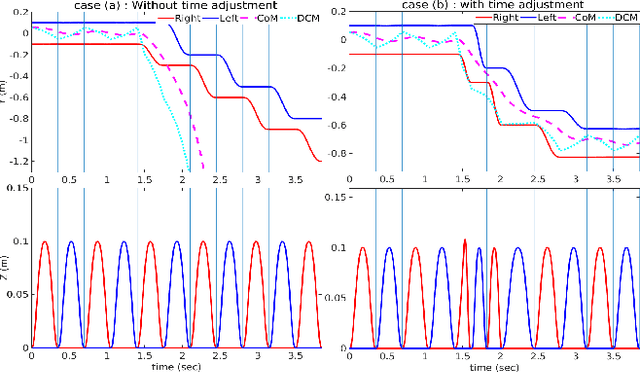Step Timing Adjustment: A Step toward Generating Robust Gaits
Paper and Code
Dec 12, 2016



Step adjustment for humanoid robots has been shown to improve robustness in gaits. However, step duration adaptation is often neglected in control strategies. In this paper, we propose an approach that combines both step location and timing adjustment for generating robust gaits. In this approach, step location and step timing are decided, based on feedback from the current state of the robot. The proposed approach is comprised of two stages. In the first stage, the nominal step location and step duration for the next step or a previewed number of steps are specified. In this stage which is done at the start of each step, the main goal is to specify the best step length and step duration for a desired walking speed. The second stage deals with finding the best landing point and landing time of the swing foot at each control cycle. In this stage, stability of the gaits is preserved by specifying a desired offset between the swing foot landing point and the Divergent Component of Motion (DCM) at the end of current step. After specifying the landing point of the swing foot at a desired time, the swing foot trajectory is regenerated at each control cycle to realize desired landing properties. Simulation on different scenarios shows the robustness of the generated gaits from our proposed approach compared to the case where no timing adjustment is employed.
 Add to Chrome
Add to Chrome Add to Firefox
Add to Firefox Add to Edge
Add to Edge